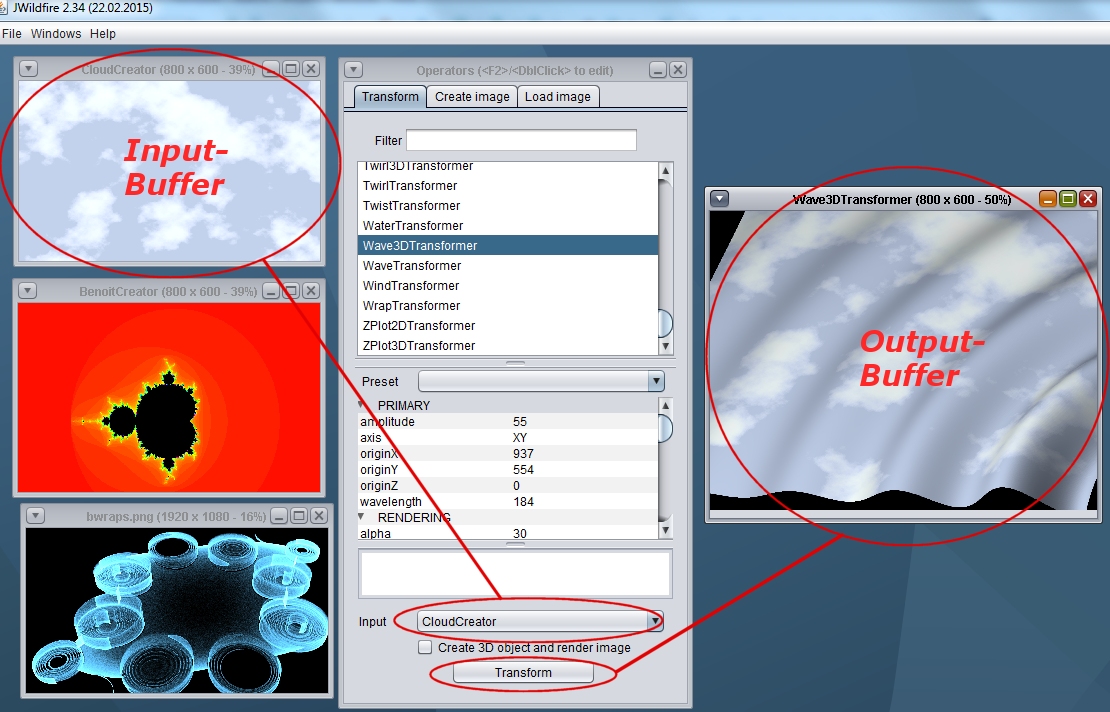Difference between revisions of "Manual Operators"
Martin Flink (Talk | contribs) |
|||
| Line 7: | Line 7: | ||
So, say, you have an image, and drag a rotate-operator on it, and draw a motion-curve (usually a ramp) for the rotation, to get a rotating image. | So, say, you have an image, and drag a rotate-operator on it, and draw a motion-curve (usually a ramp) for the rotation, to get a rotating image. | ||
And combine this rotating image with some fade-out-operator where you draw a curve for the brightness. The result is a fading out rotating image. | And combine this rotating image with some fade-out-operator where you draw a curve for the brightness. The result is a fading out rotating image. | ||
| + | |||
| + | ==The concept of buffers and operators== | ||
| + | '''Buffers''' are slots for images or 3D-structure (later more on this). | ||
| + | '''Operators''' modify the content of one buffer and create another buffer (you can modify by another operator, and so on). | ||
| + | Each buffer is displayed in a separate window and has an unique name which is displayed in the window title. | ||
| + | When applying an operator you use this name to specify which buffer to change. | ||
| + | [[File:Operators_buffers1.jpg]] | ||
Revision as of 01:21, 8 March 2015
To be honest, the Operators-part of the software is currently the oldest and weakest one, but it still has some cool features. Much of this stuff originates from the old Amiga-days, but lacks the cool Drag&Drop-Interface.
Original idea
The basic idea was to have channels of images which could be connected by operators to create other channels of images which could be connnected by other operators to create other... etc. And to be able to animate any of the parameters of those operators by drawing a curve, a motion-curve or envelope.
So, say, you have an image, and drag a rotate-operator on it, and draw a motion-curve (usually a ramp) for the rotation, to get a rotating image. And combine this rotating image with some fade-out-operator where you draw a curve for the brightness. The result is a fading out rotating image.
The concept of buffers and operators
Buffers are slots for images or 3D-structure (later more on this).
Operators modify the content of one buffer and create another buffer (you can modify by another operator, and so on).
Each buffer is displayed in a separate window and has an unique name which is displayed in the window title.
When applying an operator you use this name to specify which buffer to change.
